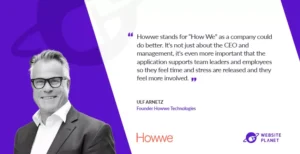Before we discuss whether organizations and their CEOs, leaders, and managers should be using Key Performance Indicators (KPIs) or Objective and Key Results (OKRs) measures in their business, it is important to ask what the purpose of any measurement system is.
Lewis Carroll’s famous Cheshire Cat answers Alice in Wonderland’s question, of “which way I ought to go from here?” with “that depends a good deal on where you want to get to.” Self-evidently, this is why we set goals, so we know what we as leaders or individuals want to achieve (the goal or destination) and the measures by how we will get there (time, route, places to visit, people to see on the way, experiences, and so on). Wrapped around the journey is also the framework to controlling the process, and we will discuss that later, as the framework is vitally important to improve chances of success in getting to your destination in line with your purpose.
While KPIs are critical for measuring outcomes, they have their own limitations. Relying solely on KPIs is like driving your car while only looking in the rearview mirror; they reflect past actions and outcomes but don’t provide a clear picture or action plan for what lies ahead. Decisions based solely on these historical metrics can be outdated by the time they are made, leading to reactive rather than proactive leadership. KPIs often do not remain sufficiently aligned to the company’s topmost core goals as they are filtered down through the organization. And there is a tendency to have far too many KPIs, covering all bases, without a real focus on what is most important. KPIs can also remain metaphorically in people’s drawers rather than being a living and breathing measure of progress.
OKRs, on the other hand, set the highest priority or Objective to the organization, or team, at the time and the Key Result (KR) that will be achieved when the Objectives are achieved. However, the OKR methodology requires a degree of sophistication in process together with skillset, maturity, and self-drive of leaders, that many companies simply may not have in-house. This area may be a domain of strategy consultants providing the horsepower to help teams figure this out, or at least provide the guidance at the top to set an OKR framework. The challenge for the management team then is to drive this down the organization, making it endure, when the process may not be so clear to themselves especially after consultants depart. Also, setting a Key Result for an Objective also doesn’t make it magically happen! Driving OKRs in Excel, or other lower-level OKR Work Operational System (WorkOS), will be as tough as driving KPIs company-wide in Excel. Trying to manage this will be very tactical, siloed, and not cross-functional, and will not be aligned to the organization’s WHY or the CEO’s Most Important Goals (MIGs). Again, it is likely that all staff using these methods add too many OKRs, rather than too few, to ‘look busy’ and within these ‘tools’ the actions required to achieve the plan are qualitative and general rather than quantitative and actionable.
Framework – modern and fit for purpose. It is fascinating that all major operational platforms in modern businesses have been revamped over the past 25 years. Just think of all the major global digital companies and brands across domains of ERP, CRM, Finance, Marketing, HR. Yet arguably the most important roles of CEO and C-suite to execute strategy or transform the business successfully, i.e. in a timely proactive way that engages the whole enterprise and improves staff leadership and satisfaction skills, has mostly been untouched by CEOs for these past 25 years. Imagine the benefits of syncing the cadence across the entire company with accountability and commitment to the drumbeat set and enforced from the top, where the C-suite has real-time visibility of progress-to-plan at each level throughout the company. Given the consideration Boards give to their risk tolerance profiles, we find it surprising that it is common to see Excel as the main way Boards, CEOs, CXO’s measure and report against KPIs or OKRs, with large PowerPoint decks accompanied with a ‘Town Hall’ or Quarterly Business Review (QBR) as the way to communicate and update strategy. We are sure our reader sees this in their organization. As previously mentioned, there are also the “WorkOS” platforms for lower-level workflow-based or function-specific tools for project or IT planning. All are fantastic tools at the “Operational Execution” level. But these have significant limitations when you try to connect, communicate, visualize and drive (rather than simply report-up or follow-up). Can you really generate accountability and commitment across the enterprise towards the CEO’s Vision, Most Important Goals (MIGs) using these low-level tools? Can you also proactively drive towards these MIGs at each company level with teams aligning their activities to the company Strategic Initiatives? Excel or similar low-level systems do not force the user to be disciplined on selection of goals or Initiatives. High-performing teams understand that the narrower the focus on goals and initiatives, with clarity of purpose, ensures successful execution. The more diluted the focus, the less the chance of successful execution.
Scalability for speed. The right cadence, consistency of the drumbeat, and speed of execution, within your chosen risk parameters, is vital for the modern CEO. Excel, as a familiar tool for all of us, while versatile, is hard to scale in the mid-large organization. Managing and maintaining complex Excel sheets at scale, say across thousands or tens of thousands of ‘white-collar’ strategically focused executives, will consume lots of Project Management Office (PMO) resources. To us, it is not the PMO salaries that are the concern, though this affects EBIT, it is the opportunity cost. Would the PMO’s rather be helping the CEO and CXO, drive and execute the Most Important Goals (MIGs) and strategic initiatives, or be gathering data, chasing other executives for progress reports, collating cross-functional progress reports and updating the plan? We are sure they would prefer to work on the business rather than in the business. This adage serves us well in rethinking how the PMO can be a strong partner in plan execution for the C-suite. Consider all the hidden costs and time of all individuals managing these progress sheets or presentations, aggregating information within a format that is often clunky, prone to errors and can be fudged. Do these reporting-up ‘layers’ really help the C-suite proactively drive the business?
Additionally, if the CEO wants to intercept poorly performing teams, or simply provide guidance and coaching proactively to lagging leaders across different business units, countries or regions, are their current methodologies, processes, ‘traditional ways of working’’ really fit for purpose? A framework that lacks data integrity will lead to a disconnect between what’s reported upwards and the real, actual performance of the business, which can be particularly dangerous when it comes to strategic decision-making and driving the business. Having the right, clear and scalable platform will help the CEO, C-Suite and Board be comfortable with accepting more risks in the execution of their plans, rather than being unnecessarily conservative from not having the real-time data in front of them.
Strategic Misalignment and Data Embellishment: In many organizations, data reported upwards becomes increasingly “polished” as it ascends the corporate ladder. This often results in a skewed understanding of performance at the highest levels. The cost of this embellishment is often overlooked, as everyone ‘believes’ they have a ‘system’. In fact, the cost of data embellishment is high. Studies show that companies typically achieve only 63% of their projected financial growth, largely due to misaligned strategies based on inaccurate or incomplete data. We believe that CEOs and senior leaders would prefer real-time, accurate insights to navigate decisions effectively, something the traditional tools simply cannot provide.
Changing Behaviors:
The additional keys to successful transformations or execution of strategic initiatives are similarly overlooked. In our mind they are threefold:
- Successful execution is an ongoing and enduring change program. When implementing change, CEOs must not only ensure consistency of message but also make any related changes to the process. Make the transformation program itself a safe space for all of their staff to make mistakes in learning new behaviors. We are not talking about making excuses for not having a go or learning what’s expected or implementing new behaviors. We are talking about adding activities that may be ‘too low’ or not ‘stretch’ enough towards the main goals. This is always about review with peers and managers and ensuring employees understand the purpose and objective from the top of the company down. Per our prior posts on Commander’s Intent and Mission Command, our learnings from reading about plan execution in the military, all staff must understand the ‘Commander’s Intent’ i.e. the WHY of the mission or business. It is important the CEOs and CXOs set a time deadline by when new behaviors and actions are non-negotiable, but until then everyone is helping each other towards the continued business improvements.
- When CEOs and all leaders have created an organizationally safe culture and space, execution is dependent on honest, clear communication. If you need more information or clarity – ask. If you don’t have enough resources – explain why. Missing a goal because you’re too focused on business as usual is understandable, however, if you have previously committed to a goal in a planning meeting, consider whether you’re being unrealistic about time management. Or are you allocating too little time to strategic priorities and planning with your team? If so, remember to reflect and prioritize your time blocks for successful execution of strategic items that might slip due to the ‘urgent vs. important’ dilemma.
- Do you make change enduring, systemic and easy? This is about having both the correct framework and the correct methodology in place. One that empowers and motivates staff i.e. they know what they are aiming for and can set their own actions connected to the top plans. And, vitally important to the success of any change of behavior, is that the methodology, process, and updating is not a burden and helps teams get things done. Having a single strategy system showing transparent progress-to-plan within 5 seconds, and one that helps teams run their strategically focused meetings, would surely be preferable to the unconnected collective of hard-to-control methods of PowerPoint, Excel, various dashboards or the lower-level operational WorkOS systems.
Challenges in Execution: The crux of executing strategy lies not just in setting fewer, focused goals but in ensuring those goals are actionable, visible, and resonate at every level of the organization. Traditional tools, like PowerPoint and Excel, while familiar, fail to engage as they are time-consuming to update, often siloed in teams or departments, are easy to fudge, and often lead to fragmented, patchy behavior and results. A unified approach is necessary to ensure coherent action across all teams, something that’s challenging to achieve with outdated tools.
Howwe® uses OKR, so why is Howwe® different compared to using OKR-tools?
Howwe® and the OKR methodology both aim to streamline organizational efforts towards goals via the achievement of Key Results amid a flurry of operational activities. Both Howwe® and the OKR process guide managers and teams in setting and executing strategic goals, offering clarity, focus, alignment, and engagement. They are easy to learn and use a structured approach for transformation and execution leading to improvements in results.
Howwe® provides outsized Returns on Investment (ROI) compared to other frameworks or lower-level WorkOS tools. Howwe® gives the user a pre-configured user-friendly enterprise platform, with easy App-based reporting, bolstered by automated AI-driven business libraries supporting all users to better develop their plans and supporting Result Areas.
Howwe® has been instrumental in helping hundreds of companies translate their strategies into tangible actions and financial results by transforming and shortening the time from a CEO’s decision to driving the commitment and actions by all related employees down and across the organization. Howwe® is proven to generate an 8X-25X ROI within 12 months from the strategic business-critical improvements and changes it empowers.
The Keys to Howwe®’s success:
Key 1: The Acceleration Meeting
Acceleration meetings across the entire company, team-by-team, are generally held weekly inside the Howwe® platform. These are not externally recorded meetings in say Word, Excel, or PowerPoint. Our users press ‘Start Acceleration Meeting’ inside the Howwe® which then takes them through the last meeting’s commitments. The team provides updates to each other and the leader, and their future commitments towards the strategic initiatives, milestones or add new milestones and actions. Then the users press ‘Save’, until the next meeting. Progress reporting to the team leader is via the Howwe® App – before the meeting. This focus on transparency and accountability, given in front of your peers who are all in the same meeting, builds trust and enhances long-term execution success. These meetings are brief because all parties are prepared beforehand, and leaders have reviewed the updates. The team focuses on areas needing their attention by reviewing Key Activity progress and ensuring alignment towards the Most Important Goals. The Acceleration Meeting is a culture-changer. And works well with the Sprint set-ups within Howwe® to focus on the team’s commitments towards the next reporting period. This meeting bolsters and enlivens team engagement and focus, guiding employees towards strategic tasks and away from operational distractions. Here, teams evaluate progress, celebrate successes, and commit to goal-driven actions. Managers also use these sessions to promptly address and immediately and there-and-then, correct any misalignments.
Key 2: The Acceleration of Goals
When all our customers use our easy-to-use methodology and platform, they experience measurable financial improvement and acceleration of strategic initiatives. This improvement is evident daily, weekly, and annually, starting even from an initial business case for the platform. Just thinking in a high-performance way of clarifying a focused set of MIGs and strategic initiatives immediately starts the alignment of modern leaders towards improving their own, and their company’s performance. Howwe®’s business-critical platform and its unique combination of methodology and software sets measurable, actionable goals at every organizational level, directly linked to financial outcomes. Most goals and action plans can be linked to improved financial outcomes, making actions and progress more exciting and measurable. In contrast, low-level KPIs and OKRs tool-sets can lack the financial connection and focus more on the present and business-as-usual, rather than stretching the company. Howwe® eliminates ambiguity about goal progress and impact, as the platform provides visualization of team achievements. As the company’s performance accelerates, all team’s confidence is boosted at both individual and the collective levels which is proven to enhance employee Net Promoter Score (eNPS) in our clients.
Key 3: A top-down approach is vital
Howwe® ‘s top-down approach, starting with the CEO’s focus on a few Most Important Goals (MIGs), and associated strategic initiatives drives unparalleled results. These prioritized goals drive through every team, ensuring that achieving them addresses core business issues and goals. This alignment accelerates work and hastens outcomes. Moreover, Howwe®’s quick, automated staff onboarding further speeds up the time between knowing what you should be aiming at and achieving your results. Simultaneously, it functions as a bottom-up tool, empowering rapid alignment and high involvement with company-wide goals. The Howwe® Library, unlike the lower-level WorkOS OKR tools, contains goals and activities that have been rigorously vetted and proven successful by over 1000 teams. This approach boosts commitment and confidence by visually showing individual contributions to these goals. Additionally, Howwe® facilitates strategic initiative execution, organized and tracked by Sprint Labels. Differing from the bottom-up approach of low-level software, where teams set more business-as-usual low-level activity, Howwe® begins with top-level engagement, directly involving CEOs to drive enterprise growth and connect the WHY and vision to the essential bottom-up action planning towards the strategic goals. Unlike typical OKR tools, Howwe® provides individual guidance, insights, and alerts driven by automated intelligence to help achieve set the goals and improve the execution ability of the team and individual.
Summary – moving from ‘reactive following up’ to ‘proactive driving’
The CEO’s role is evolving, and modern CEOs require clear, strategic insights—something that’s hard to achieve with isolated, fragmented, lagging data points in spreadsheets. Ultimately, the challenges that face today’s CEOs in transforming and driving their company’s success to achieve on-time financial results are not unique, but they are critical. Moving beyond Excel, PowerPoints, lower-level WorkOS’s and KPIs or vanilla OKRs, to a dynamic, real-time, strategically focused, digital platform enhances the CEO’s and C-Suites’ ability to visualize, influence and execute their company-wide strategic goals. Using a digital business-critical platform enables the modern CEO to set the company vision and proactively drive the business towards it, transforming the company’s behaviors in the process. Actions are connected to the strategy by forward-looking measures, enabling all leaders to visualize and drive commitments towards the goals rather than simply react and ‘follow-up’ to the outcomes of KPIs.
Howwe® combines a streamlined, successful methodology with easy-to-use software. Data aggregation is clear, providing insightful, data-driven analysis and visualization of past and future performance. It narrows down the number of goals, to improve all teams’ focus on what is vital for the company’s success. The structured Acceleration Meetings held inside the Howwe® platform ensure strategic items are not pushed to the next period or forgotten, they enhance visibility of progress. This helps the CEO foster an enterprise-wide culture of trust, accountability, commitment, and mature conversation. Howwe® enables proper delegation and planning down to the appropriate manager levels to make any timely adjustments there-and-then with their teams.
Howwe® equips all teams for success. It is the modern leader’s platform for those organizations that are serious about efficient goal achievement, enabling them to measure and visually forecast future outcomes based on proactively driving progress-to-plan across their companies. If you would like to accelerate your business and modernize your approach to execution, by evaluating a modern digital way of working within Howwe®, please reach out.
Article by Stephen Bowhill, MD at Howwe ANZ





